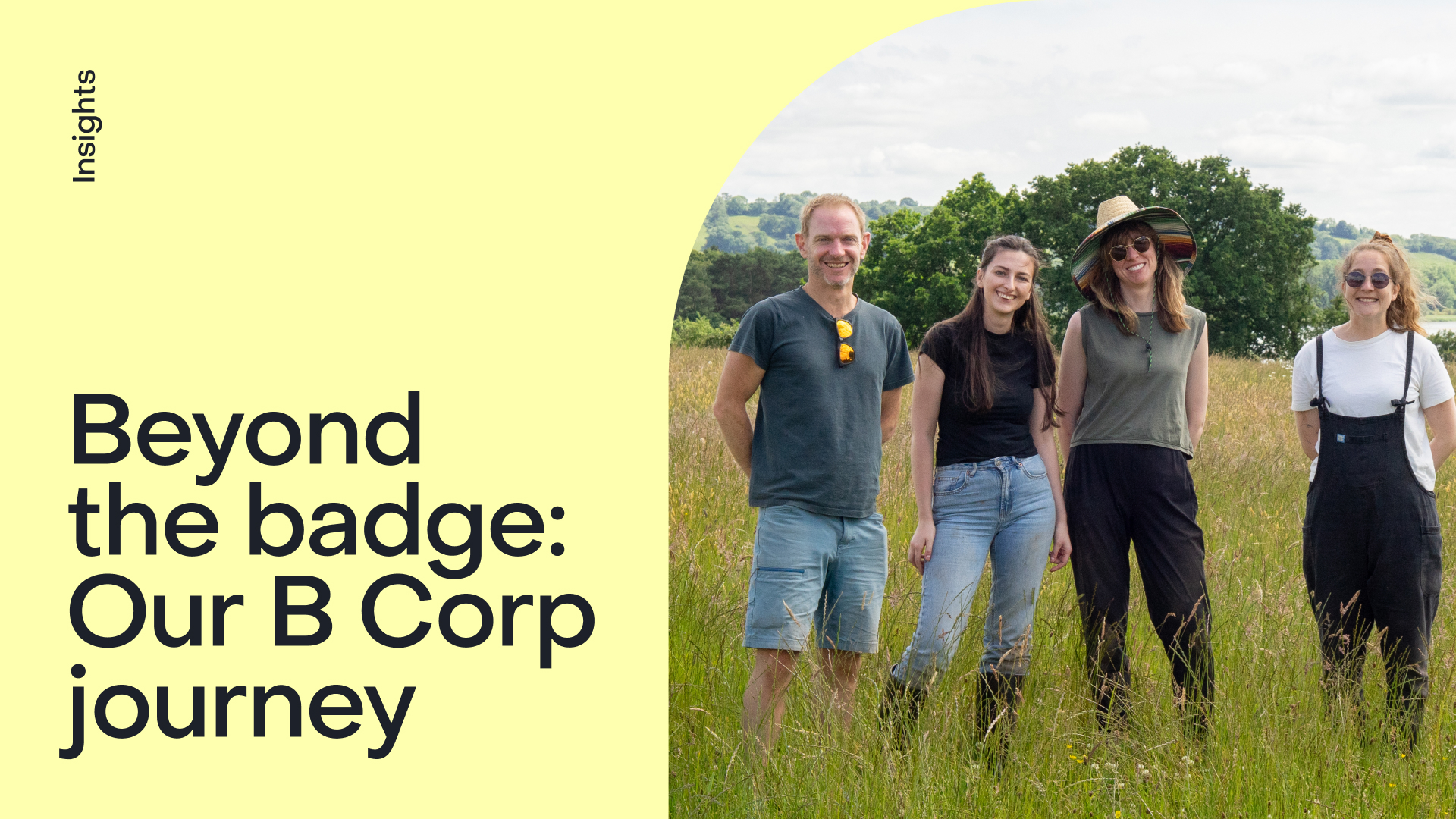How data visualisation can make a world of difference
The way we communicate data can be a potent catalyst for change. Here’s why we think it’s so important, and some powerful examples of data done right.

Emma Higgins

Gathering data helps us make sense of our complex and ever changing world, revealing vitally important trends and patterns.
There are millions of researchers and organisations who’ve gathered and analysed important datasets. And in some cases used them to produce innovative ideas, solutions and systems that could help us make the shifts we need to preserve our planet. Here at Yoke, we believe that making these concepts more tangible and accessible will ultimately inspire widespread action and implementation.
Setting the scene:
Imagine you’re working at a leading sustainability charity. Your team of researchers and scientists have spent years gathering data related to local ecological breakdown. They’ve run the numbers, and it's obvious that something needed to be done yesterday to restrict the use of certain harmful chemicals in the area.
Or rather - it’s obvious to you. But how are you going to convince policymakers? Especially when you may only have a few minutes or pages to do so…

Audience and approach to complexity
This is where data visualisation can help. We can take that complex raw data that’s too unwieldy and dense to present on its own. And use design to help bridge the divide between foundational research and policymaker (or public) understanding.
By using layers of visual communication such as design, branding and storytelling, we can translate complex findings into an attractive and digestible set of takeaways. Bringing the audience on a journey, and getting them as close to that core data as possible. Quickly conveying the scale and nuances of a problem, and hopefully inspiring change!
Here are our top tips for making your data visualisation as impactful as possible. Alongside some particularly great examples from us and the wider world:

Brand Strength
Let’s start with the foundations. There are some simple rules you can follow to make sure your data visualisation is as strong, consistent and user-friendly as possible:
- Be consistent! Build a set of guidelines for your data presentations that contain key rules for colours, fonts and structure
- Function first - never let the design obscure understanding
- Use a minimalist layout to let the data shine
- Embrace white space
- Be consistent (did we say that already?) - this is so important so its worth saying twice
The slideshow above shows a recent project we completed for the Just Rural Transition putting this into practice.

Interactivity
Interactivity invites the audience to manipulate the data themselves, comprehending it more deeply and making their own memorable discoveries in the process. It can also allow for researchers to isolate and highlight the most important and impactful aspects of data, as well as bring them together to offer ‘the big picture’. This is especially useful for large, complex data sets.
The International Energy Agency do a world class job presenting their data in an interactive manner.


Overall ranking
A dataset with an overall ranking allows the audience to quickly sumarise changes in statistics to see how each aspect affects the top level. This is especially useful for research which encompasses many aspects - such as this ‘Corruptions Perceptions Index’ below. This index ranks 180 countries by their perceived levels of public sector corruption. Scores may be reached through complex analysis - yet simultaneously create a simple comprehensible ranking system.


Multi level presentation
If you’ve got a lot of data, a multi-level presentation can offer the audience an attractive overall snapshot, with options to dig deeper. By splitting information into separate levels you can accommodate various audiences and minimise information overwhelm. The example below is a snapshot of Globalance World, an interactive digital world map that allows you to discover the environmental and climate impact and returns of your wealth. With structure, clarity and interactivity used in equal measures the experience is very rewarding.


Engaging with design
Sometimes the strength of a design can be enough to draw your audience in. When your concept and presentation is rock solid, it takes your audience almost no effort at all to understand the data you’re presenting.
Take these contemporary examples from IUCN Restoration Barometer, for example – with a data-driven 'look 'n' feel' that is easy to discern via clean shapes and accessible colour combinations.

Storytelling
Guiding your audience through your data can ensure your message lands as you intended. Our recent explainer animation for the Meat Me Halfway movie is a prime example. Here, words and motion add an extra emotional punch to already stark statistics. Offering the audience short facts or prompts, supported masterfully by corresponding and impactful infographics.

Complexity
When dealing with vast amounts of data, sometimes complexity is unavoidable. But as evidenced by this interactive map of US electrical sources, it can still make perfect sense. With the help of thoughtful filters, a clear corresponding side bar (including overall rankings) and a simple colour scheme, this potential behemoth of information makes the energy breakdown of each state surprisingly easy to comprehend.


Role of beauty
Never underestimate the power of delighting or captivating your audience. These joyful infographics from our project for Trust Tracker illustrate that adding an element of 'playfulness' or surprise into your data visualisation can engage and inform your audience in equal measure.
Conclusion / Wrap up
Data visualisation is an essential step in any data science process, but not all data visualisation is created equal. As we’ve seen here, thoughtful design can elevate a basic conclusion into something that dramatically enhances an audience’s understanding, and even changes hearts and minds. This is why we’re excited to keep working with innovators to make their data mean more, and communicate world-changing research in the most engaging ways possible.


.jpg)